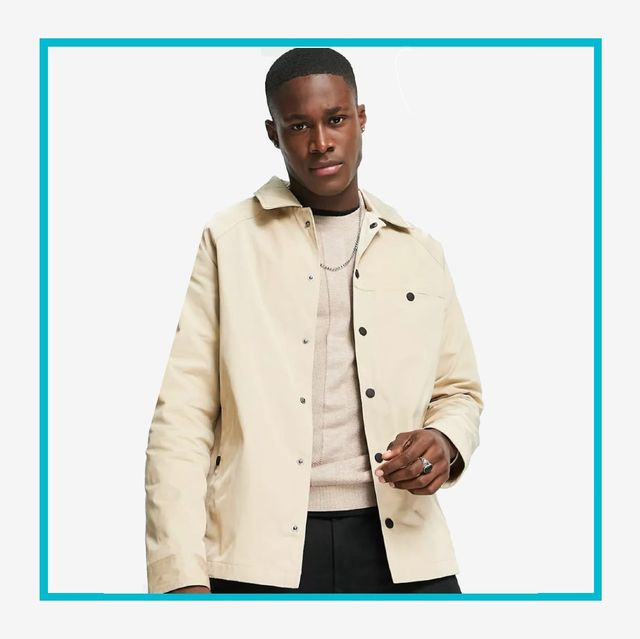Branded Clothing for Travel: Wrinkle-Resistant Fabrics That Perform
Branded Clothing for Travel: Wrinkle-Resistant Fabrics That Perform
Blog Article
Comprehending Apparel: The Relevance of Fabric Choices in Your Wardrobe
The selection of textile in apparel plays an essential function in both looks and performance. Various materials use differing degrees of comfort, longevity, and breathability, directly influencing the wearer's experience. Comprehending these subtleties can improve one's wardrobe significantly. Several ignore just how these choices can affect not just personal style, however also sustainability. What fabric decisions could redefine your closet and align it with both style and obligation?
The Duty of Material in vogue and Performance

Common Material Kinds and Their Features
When selecting garments, recognizing the attributes of common fabric types is essential for making notified selections. Cotton, a widely-used natural fiber, is understood for its gentleness, versatility, and breathability, making it appropriate for informal wear and day-to-day garments. Bed linen, an additional all-natural choice, boasts superb moisture-wicking residential properties and a distinctive appearance, suitable for warm climates.Wool, usually preferred for its heat and durability, varies in excellence; merino woollen is soft against the skin, while coarser types are utilized for outerwear. Artificial fabrics like polyester and nylon provide toughness and resistance to creases, making them preferred for activewear and traveling garments. Blends, which integrate all-natural and artificial fibers, can enhance capability while maintaining convenience. By recognizing these fabric features, people can pick clothing that aligns with their lifestyle and visual choices.
Breathability and Comfort: Choosing the Right Fabrics for Different Climates
Choosing the appropriate materials for various environments can significantly enhance comfort and overall wearability. Breathable materials are essential in hot climates, as they allow air flow and dampness evaporation. Fabrics such as cotton, linen, and moisture-wicking synthetics successfully attract sweat away from the body, maintaining the wearer cool and completely dry. Alternatively, in cooler climates, thicker materials like wool or fleece give insulation while retaining breathability, guaranteeing warmth without overheating.Additionally, the selection of textile weight plays an important duty; light-weight textiles are more effective for summer, whereas larger options are fit for winter season wear. Recognizing the unique properties of each textile makes it possible for individuals to clothe properly for varying climate condition. Ultimately, picking comfortable and breathable textiles customized to details environments can significantly boost daily convenience and boost the overall experience of using clothes.
Toughness and Care: How Textile Impacts Durability of Your Closet
Picking the right materials can considerably affect the durability and treatment demands of a closet. Fabrics such as cotton and polyester are known for their resilience and ease of upkeep, making them excellent for daily wear. On the other hand, delicate products like silk and shoelace need more cautious handling and specialized cleaning approaches, which can raise the moment and initiative needed for care. Branded Clothing.Durability is likewise influenced by the textile's weave and coating; firmly woven materials tend to withstand deterioration much better than loosely woven alternatives. In addition, artificial blends frequently offer boosted resilience, incorporating the most effective top qualities of several fibers.Understanding the treatment guidelines for every fabric is crucial, as inappropriate drying or cleaning can bring about premature wear. Eventually, selecting resilient materials can result in a longer-lasting closet, lowering the regularity of replacements and contributing to a much more lasting fashion choice
The Impact of Fabric on Fit and Silhouette

Lasting Material Choices: Making Eco-Friendly Decisions
The effect of material expands past fit and silhouette to incorporate environmental variables, prompting an expanding rate of interest in lasting fabric choices. Environmentally friendly materials, such as organic cotton, hemp, and Tencel, are acquiring traction among consumers that focus on sustainability in their wardrobes. These materials are typically generated with less chemicals and water, decreasing their environmental footprint.Additionally, recycled materials, made from post-consumer waste, offer an ingenious option to the textile market's contamination problem. Brands increasingly accept transparency in their sourcing methods, permitting customers to make educated choices about their purchases.Choosing lasting textiles not only sustains ethical methods however additionally encourages the fashion business to adopt more accountable production techniques. As recognition of environmental issues increases, people are advised to review the long-lasting impact of their textile selections, promoting a movement towards a much more eco mindful and lasting method to fashion.
Elevating Style: Exactly How Fabric Can Transform an Outfit
While lots of might concentrate on color and cut when choosing an outfit, the selection of material plays a vital function in raising design and enhancing overall look. Different products convey unique moods and messages; for example, silk emanates high-end and sophistication, while jeans offers an informal, loosened up ambiance. The texture and drape of a fabric can drastically alter the silhouette, with structured fabrics giving a sleek appearance and softer ones developing an extra fluid, unwinded aesthetic.Moreover, the weight of the material influences wearability across seasons. visit homepage Light-weight materials like bed linen and cotton are suitable for summer, while heavier materials such as woollen and velour offer heat and style in chillier months. Recognizing material buildings, such as breathability and stretch, likewise encourages people to make enlightened choices that improve convenience without compromising design. here are the findings Eventually, the ideal fabric can transform an attire from average to extraordinary, making it a vital factor to consider in any kind of closet.
Often Asked Questions
How Do I Identify the Material Material of My Apparel?
To determine textile content, one can analyze treatment labels, conduct burn examinations for fiber recognition, or consult material swatches. These techniques assist distinguish products, making sure notified selections for apparel treatment and upkeep in day-to-day wear.
Can Textile Selection Affect My State Of Mind or Confidence?
Material option can considerably affect a person's state of mind and confidence. Branded Clothing. Certain materials might stimulate feelings of convenience or elegance, while others can really feel unflattering or restrictive, inevitably influencing self-perception and emotional wellness throughout the day
What Fabrics Are Best for Delicate Skin?
For individuals with sensitive skin, all-natural materials like bamboo, cotton, and linen are commonly advised. These materials are breathable, hypoallergenic, and less likely to trigger inflammation, making them appropriate selections for comfort and skin wellness.
How Do I Correctly Clean and Look After Various Fabrics?
To effectively care and clean for various fabrics, one need to think about each material's particular needs, including temperature setups, cleaning agents, and drying approaches, making sure longevity and maintaining the textile's initial top qualities for excellent use.
Exist Particular Fabrics for Athletic or Performance Use?
Sports or performance wear typically utilizes textiles such as nylon, polyester, and spandex. These materials are designed for moisture-wicking, breathability, and adaptability, enhancing motion and comfort throughout physical tasks while giving resilience and assistance. Conversely, in cooler climates, thicker fabrics like woollen or fleece give insulation while retaining breathability, ensuring warmth without overheating.Additionally, the choice of fabric weight plays a crucial role; light-weight textiles are more suitable for summer, whereas larger options are matched for winter months wear. In comparison, fragile products like silk and lace call for even more cautious handling and specialized cleansing methods, which can increase the time and effort needed for care.Durability is YOURURL.com additionally influenced by the material's weave and coating; snugly woven materials often tend to resist wear and tear better than loosely woven alternatives. In comparison, rigid materials can restrict movement however offer a timeless, polished look.Moreover, the thickness and structure of the fabric can influence the visual perception of body shape. The impact of fabric prolongs past fit and shape to include ecological variables, triggering a growing passion in lasting fabric options. The appearance and drape of a textile can dramatically change the silhouette, with organized materials offering a polished appearance and softer ones producing an extra fluid, kicked back aesthetic.Moreover, the weight of the fabric affects wearability across periods.
Report this page